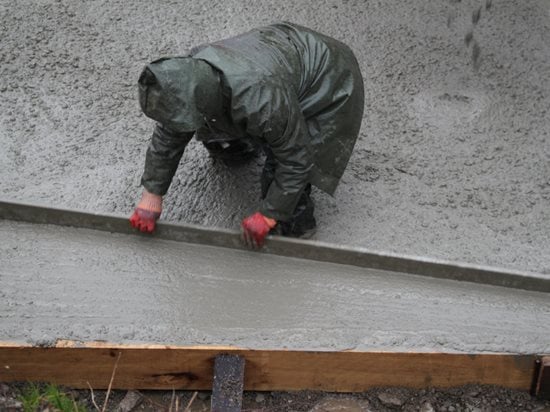The new slab can be walked on in about 12 hours and i would leave it to dry for about a week before continuing with the construction of your building.
Pouring concrete walls in the rain.
If you re in the middle of a slab pour when the rain starts the best option is to stop or break the.
Pouring concrete in the rain can compromise its strength increasing the tendency for dusting and scaling to develop.
This is vital if you re.
Rainwater can cause a new concrete surface to become soft which in turn decreases the abrasion resistance and strength of the concrete while increasing the tendency for dusting and cracking to develop.
Once the damage is done it can be hard to rectify and will often ruin the appearance of the finished surface.
How do i fix cracks in a concrete slab.
If possible tent the pour with tarps to keep rain from mixing with the concrete.
If there s rain expected and you re having a professional do the job you can ask your concrete layer how they will be prepared for this.
Generally speaking you should avoid pouring concrete in the rain.
Unpredictable summer thunderstorms can wreak havoc on a concrete pour.
Check the weather forecast before pouring the concrete and prepare accordingly if you are pouring independently.
Don t let it rain on your parade.
Pour the concrete onto the existing damaged concrete in the same way and trowel to a smooth finish and hopefully there is no more rain to cause any damage.
How to pour concrete in the rain stop the pour.
Here are some tips for preventing and troubleshooting rain damaged concrete.
Cover with tarpaulins or waterproof covers that cover the area to be poured.
The biggest problem you may be faced with is the effect the rain may have had on the surface of the concrete.
Also achieving an optimal concrete mixture will be much harder when you can t control how much rain is getting into it.
Keep these on standby and apply as each area is ready to leave for curing.





























